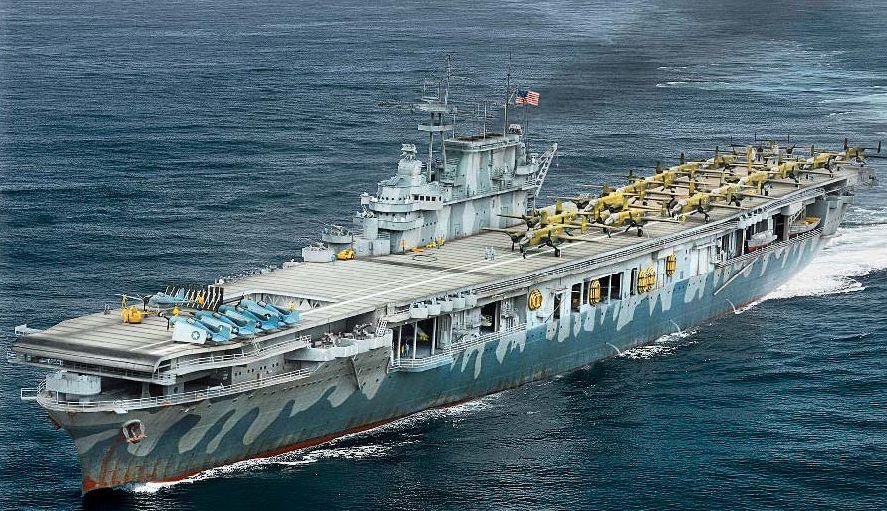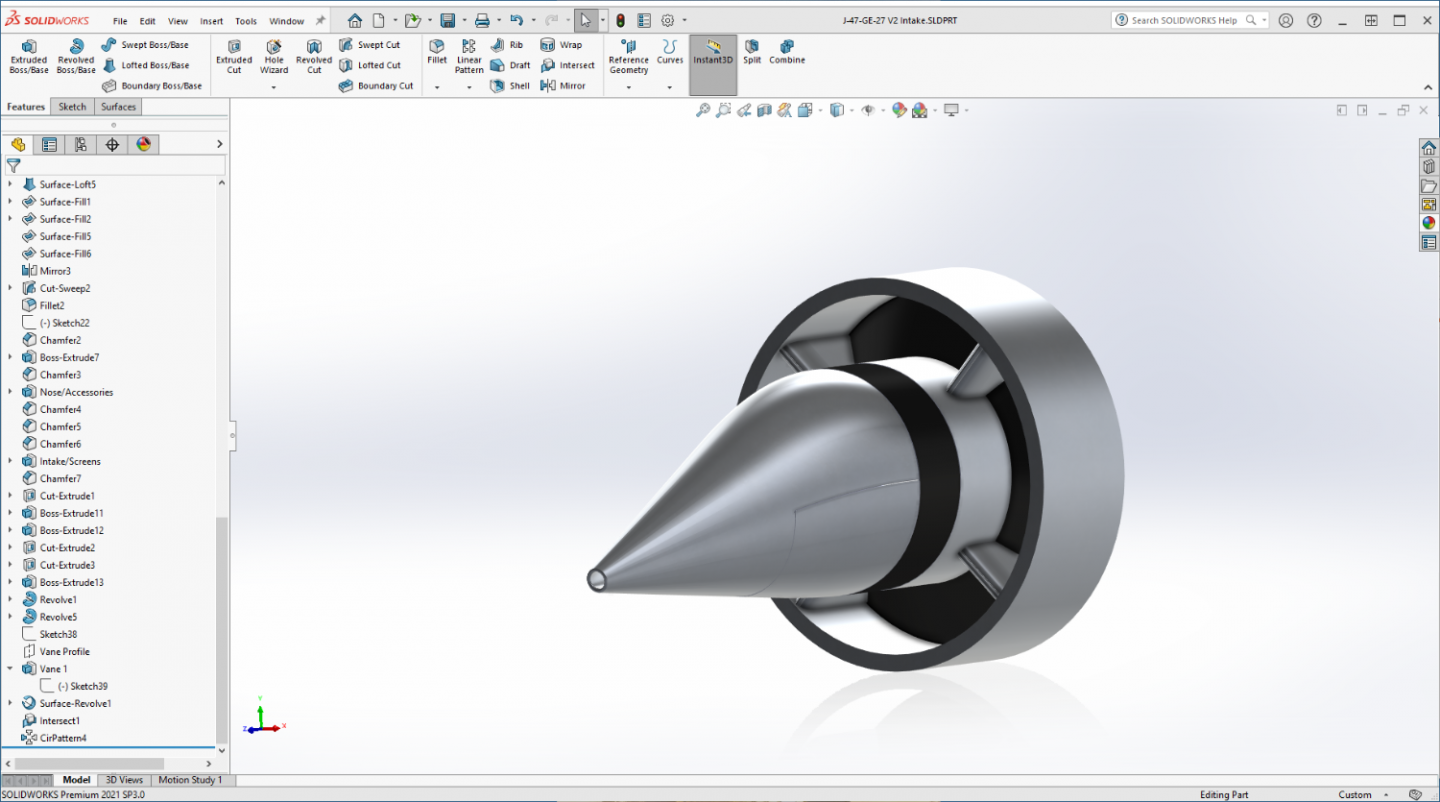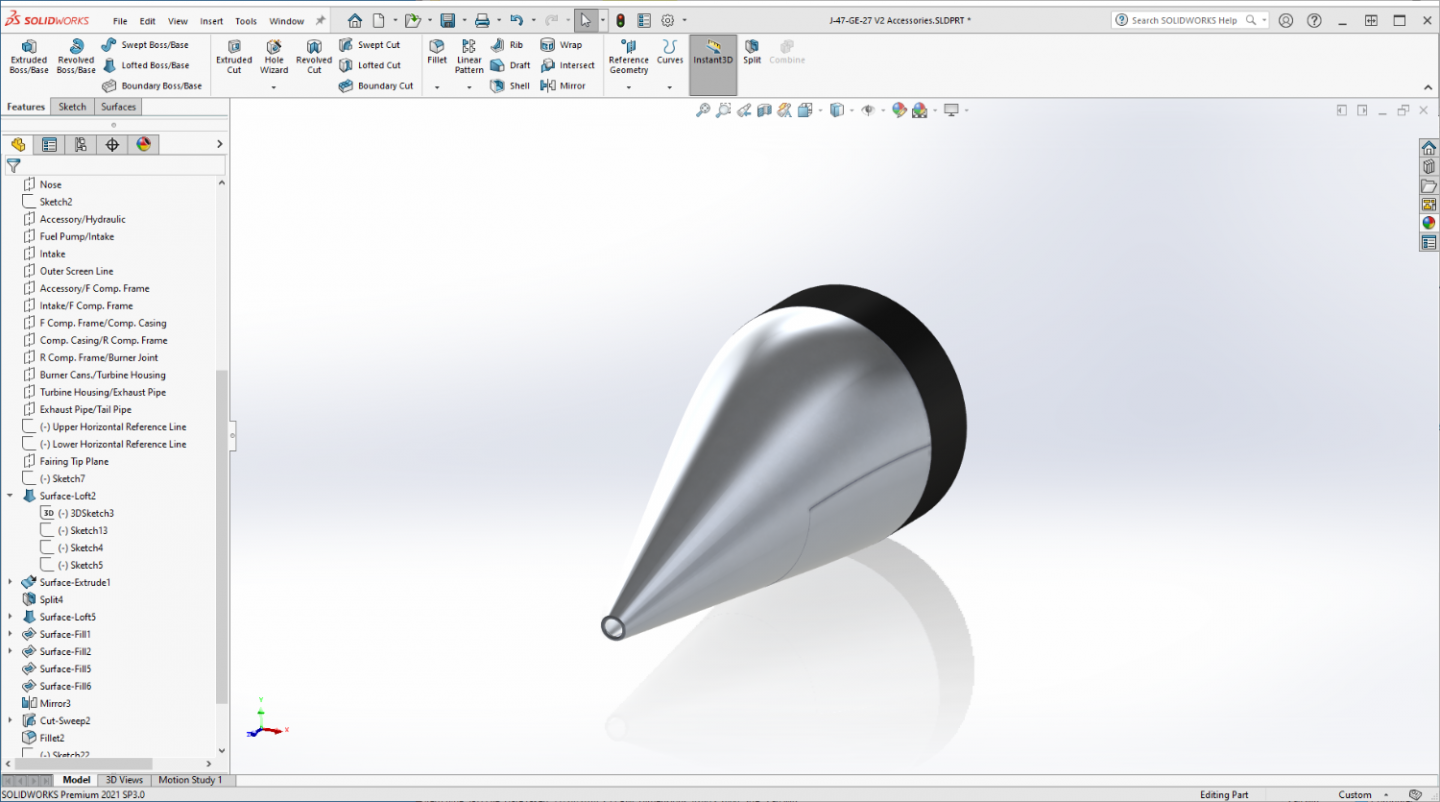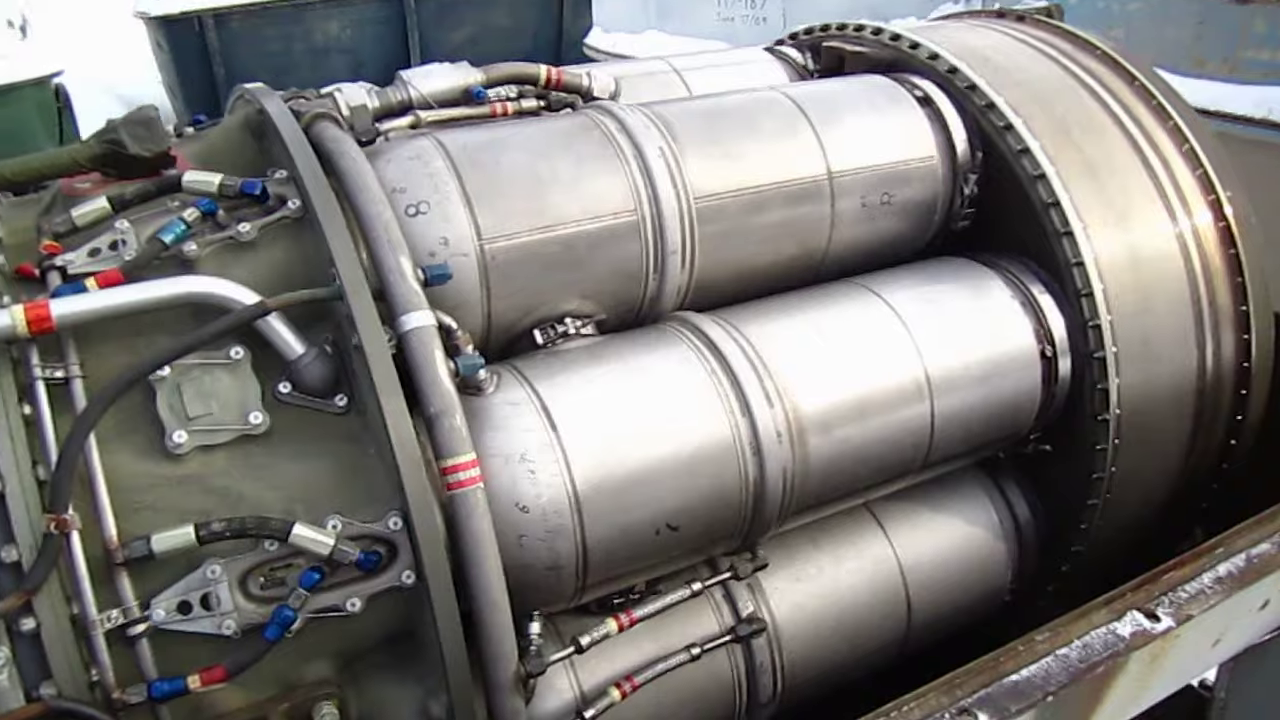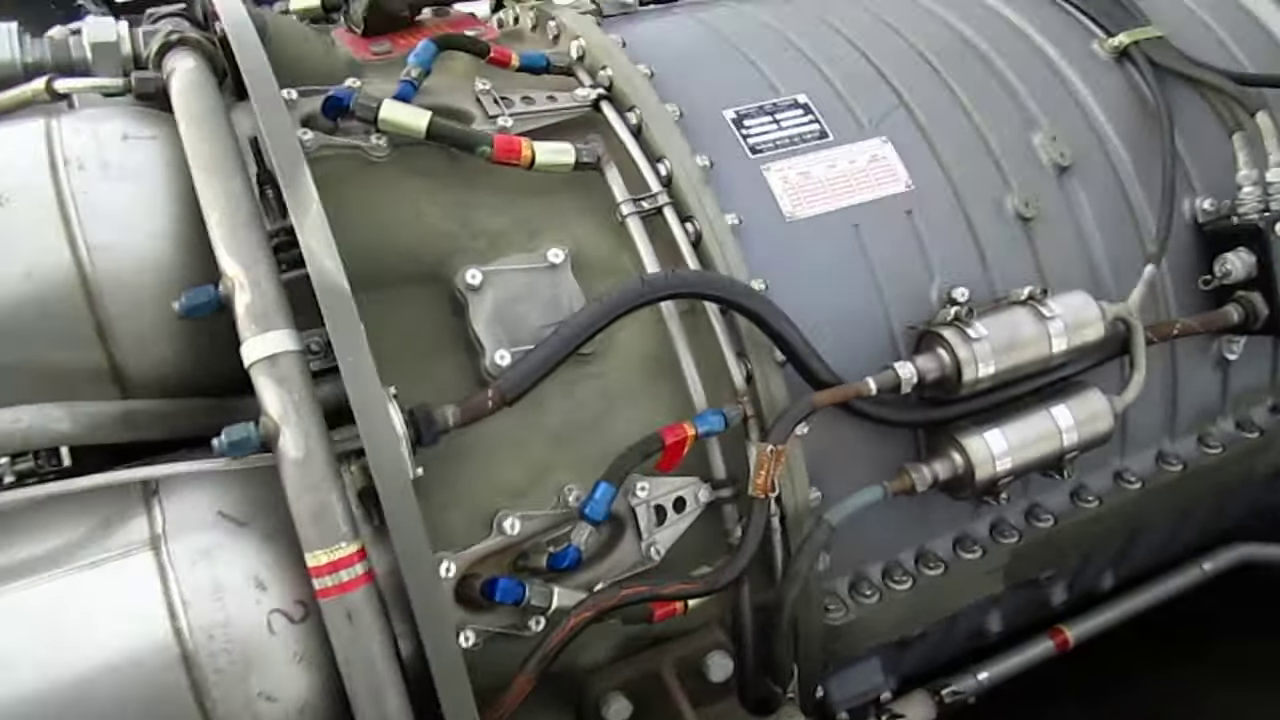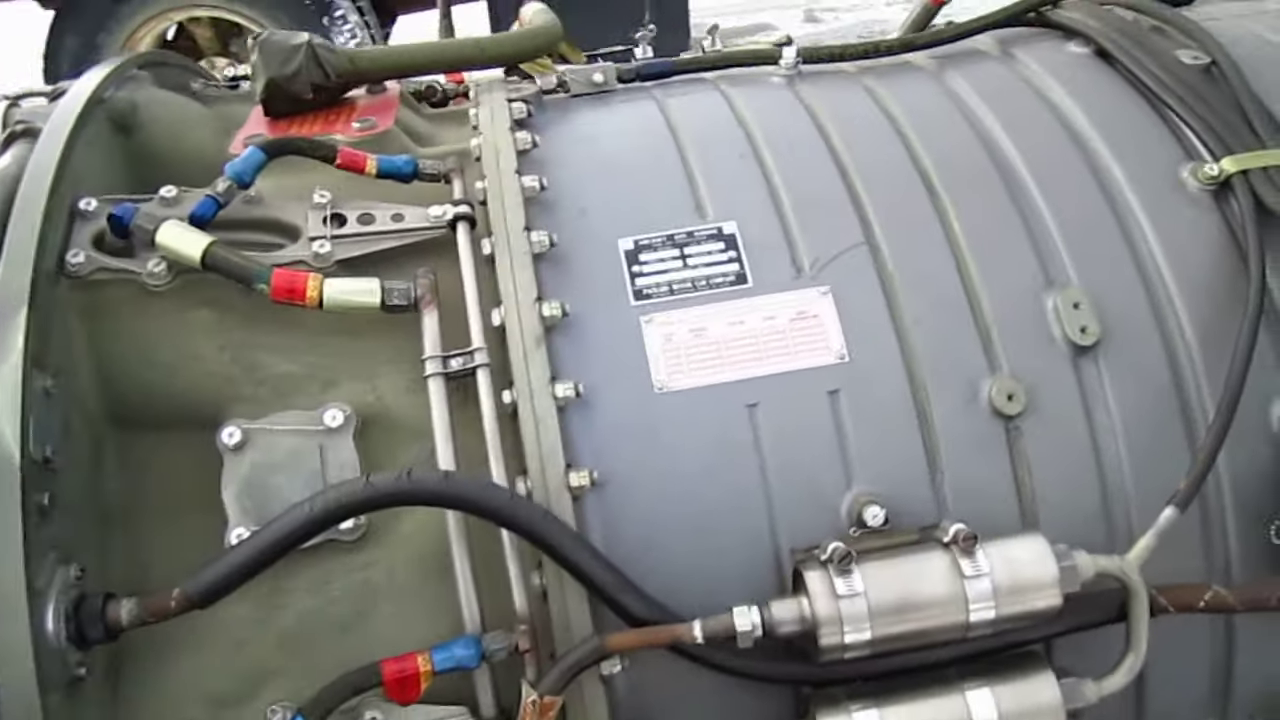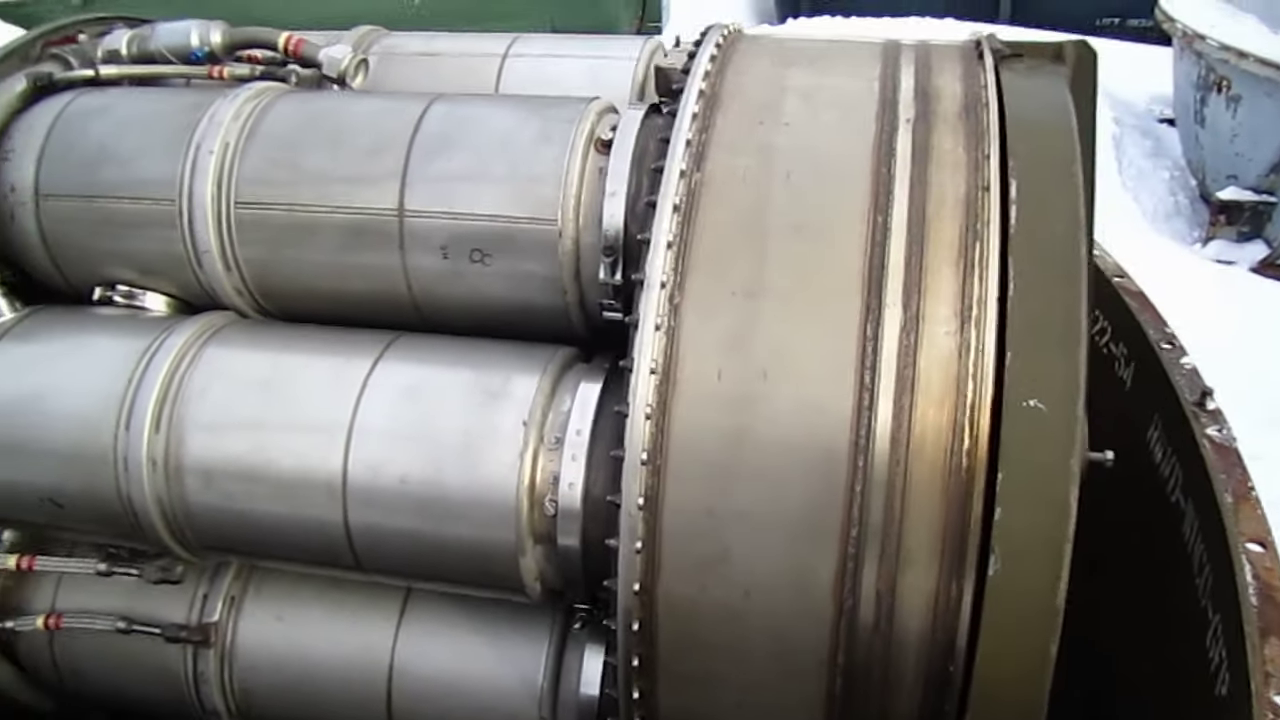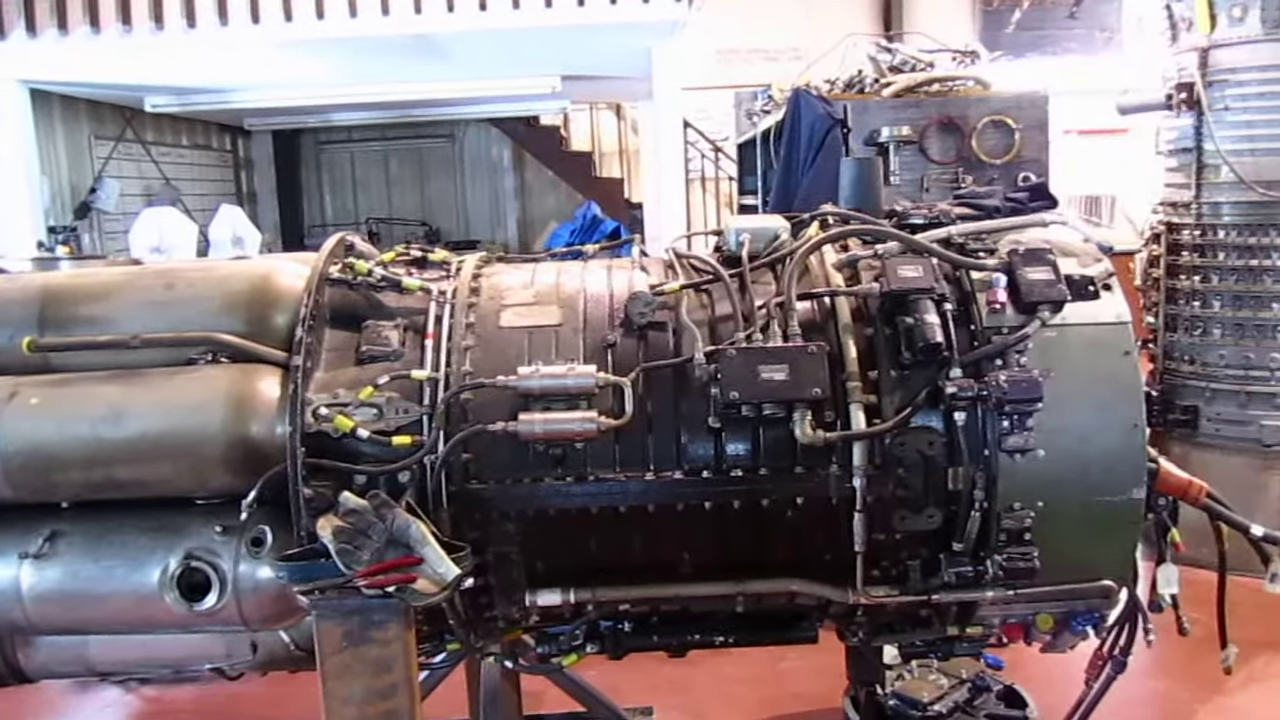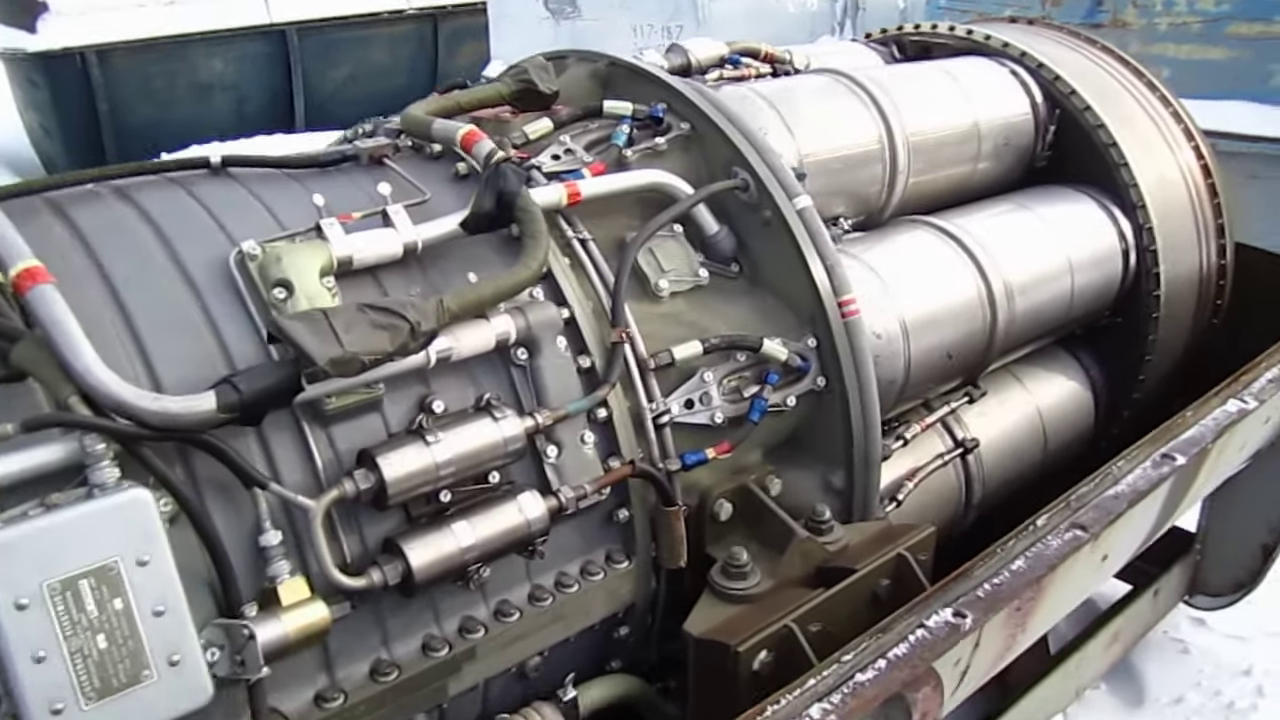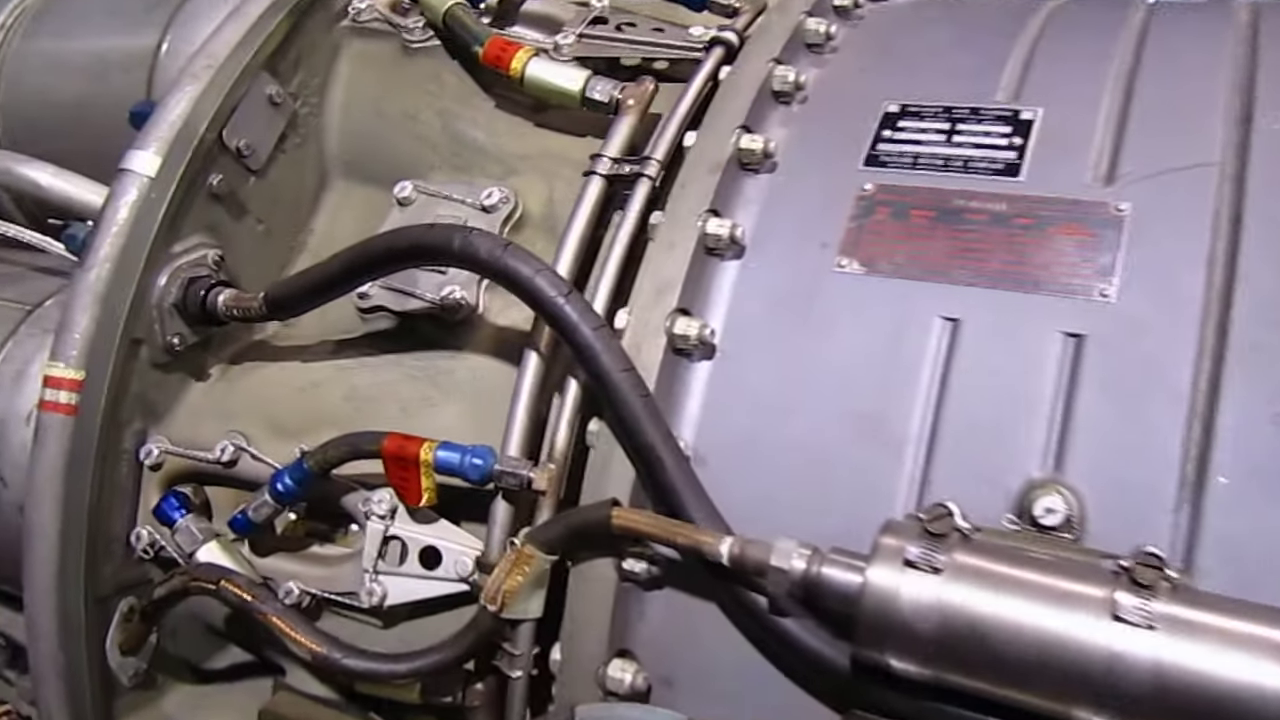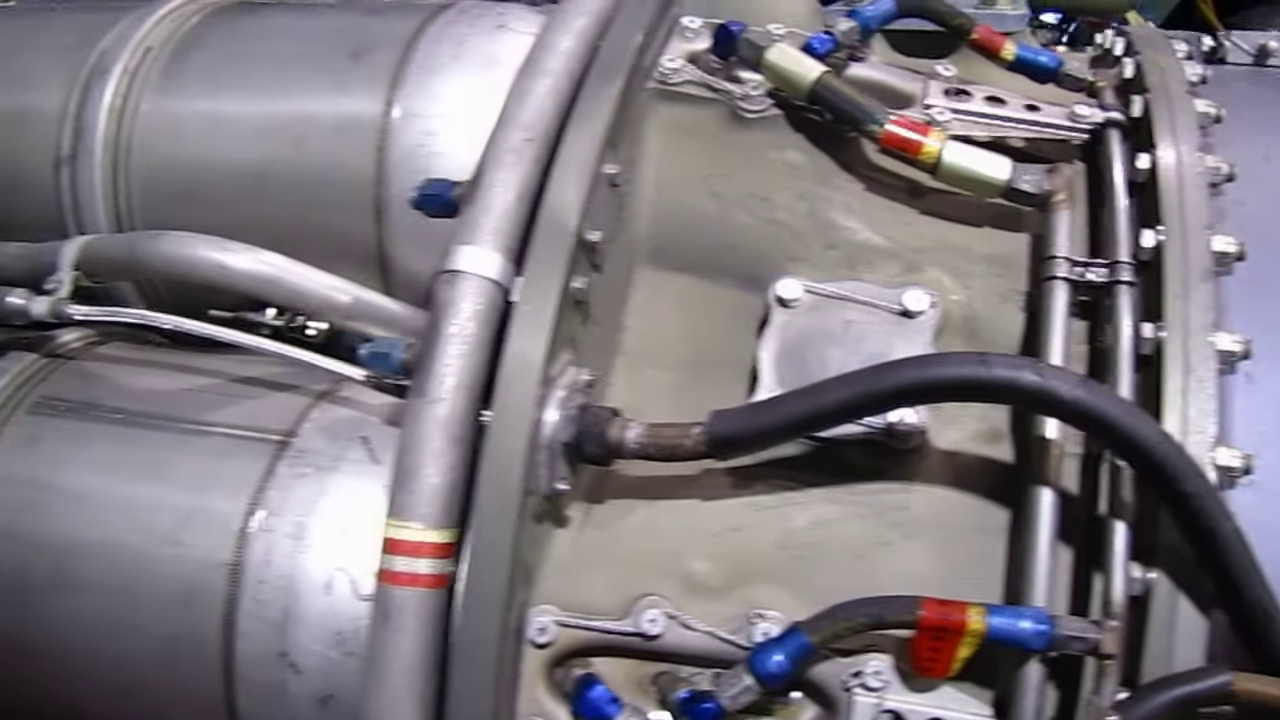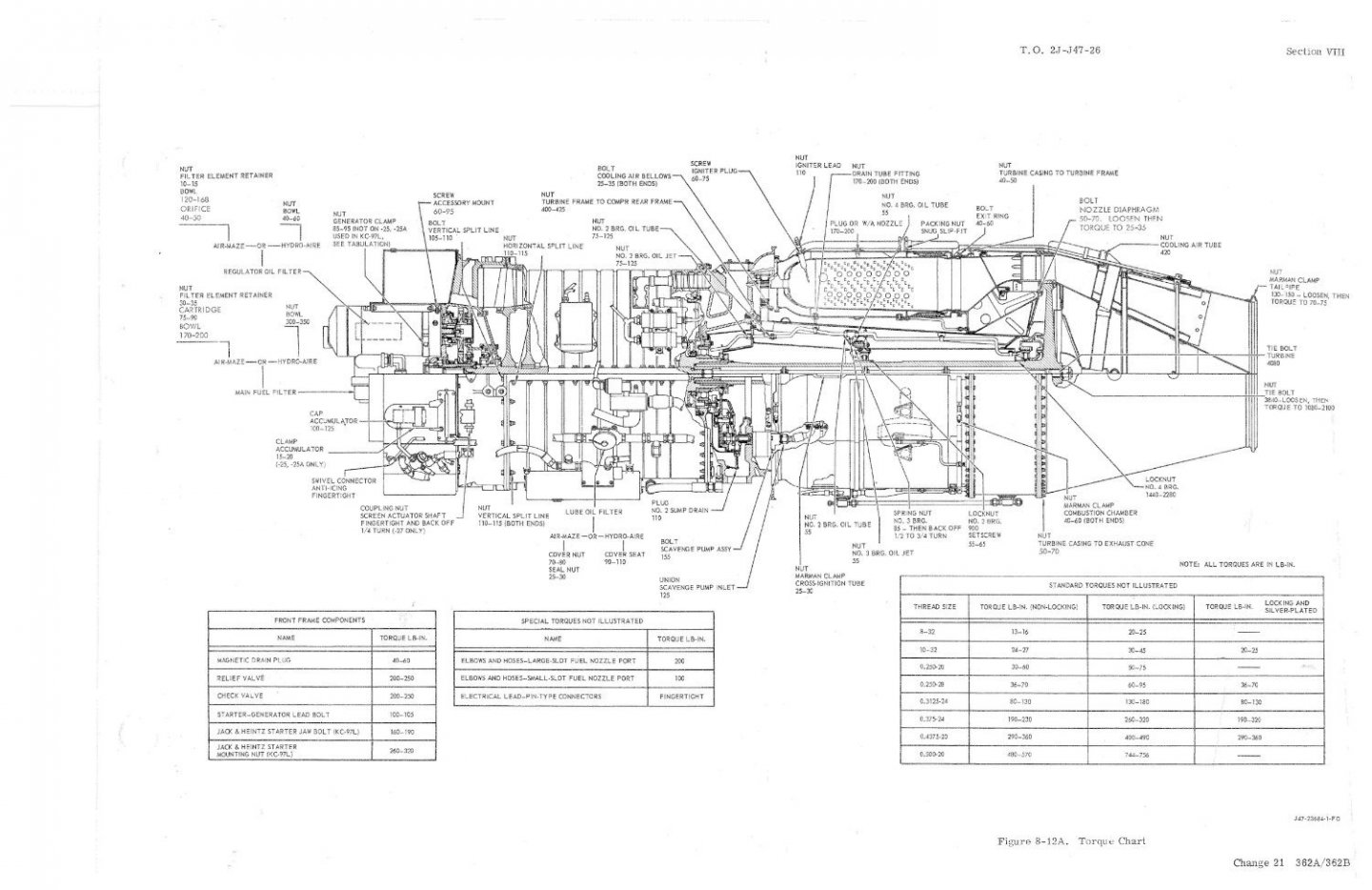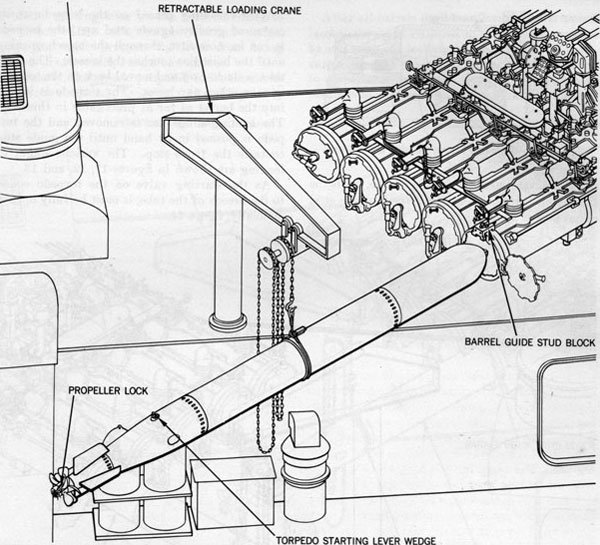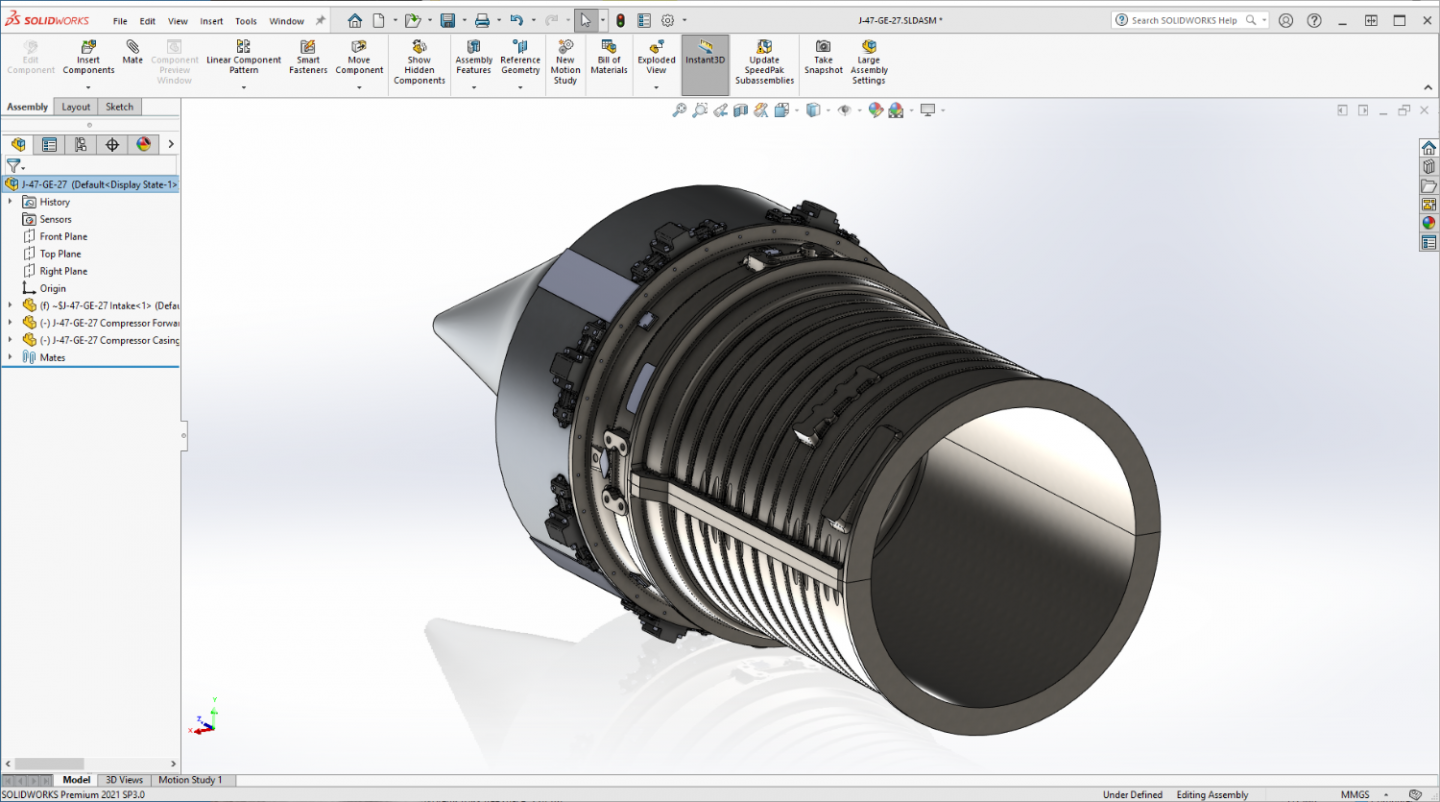-
Posts
4,377 -
Joined
-
Last visited
Content Type
Profiles
Forums
Gallery
Events
Everything posted by Egilman
-

F-86F-30 Sabre by Egilman - Kinetic - 1/32nd scale
Egilman replied to Egilman's topic in Non-ship/categorised builds
That's the ticket my friend... Start out simple and learn the process... (then go nuts making things you never thought you could make) If we don't support and help each other, what's the point of a site like this? Someone may have solved a problem that is virtually impossible for another to sort out... Sharing is the way.... Best site on the net for model building.... Bar NONE!!! -

F-86F-30 Sabre by Egilman - Kinetic - 1/32nd scale
Egilman replied to Egilman's topic in Non-ship/categorised builds
Thank you Alan... Doin my best.... Just finished re-cutting the screens, update in a few minutes... -

F-86F-30 Sabre by Egilman - Kinetic - 1/32nd scale
Egilman replied to Egilman's topic in Non-ship/categorised builds
-

F-86F-30 Sabre by Egilman - Kinetic - 1/32nd scale
Egilman replied to Egilman's topic in Non-ship/categorised builds
My pleasure... Sketchup is a good starter package, in fact, some have gotten very good with it... But it isn't a true parametric modeler... (creating dimensionally accurate truly solid models) Good to get your feet wet in understanding the 3D creation process ... Over the years there is one thing I learned that helped a great deal with not getting frustrated with the online tutorial process.... Dual Monitors... You read or watch the tutorial on one screen and run the software on the other so your not switching back and forth all the time... (that is a real frustrating drag) This is my setup... And don't worry about all the gadgets people are going to say are absolute necessities like 3D mouses and the like, I use a plain old Logitech three button scroll wheel mouse, you don't need no more than that.. (you probably already have one) Saves a lot of headaches.... Good luck brother, any questions I'll try to help... -

F-86F-30 Sabre by Egilman - Kinetic - 1/32nd scale
Egilman replied to Egilman's topic in Non-ship/categorised builds
It's like anything, you have to start somewhere... I've been doing tutorials for a few years now but there comes the point of using what you've learned about the operation and use of the software and putting it into actual practice... This J-47 finally gave me the push I needed to apply what I've been practicing for a while now... It helps having an engineering background which you have brother but it's not necessary... I've had no formal 3D training either, all my training took place as a teenager in high school and technical school... And yes I know for sure if you don't use it you lose it, it's not all riding a bike.... My suggestion brother is pick one of the free 3D software's out there and play with it.. Which one doesn't really matter, get familiar with how it works... The one I started with is Blender, it's is a full featured 3D program but it's really aimed at the movie/animation crowd not the engineering crowd although drafting quality 3D modeling can be done with it... once you are familiar with how 3D functions, pick a software that is fully engineering capable... (parametric is the term) Most choose Fusion 3D cause it is free and there are "some" tutorials for it to learn it specifically... (my opinion is it plays on the Autocad/Autodesk name recognition) It's not a top line 3D package too buggy for serious production work... The one they are teaching in most of the schools is either Solidworks or Autocad Inventor... Personally, my opinion is Inventor suffers from being made by Autodesk... The other mainstream 3D software is Rhino... Rhino started as a 3D plugin for Autocad, (created for Boeing) and grew into it's own standalone fully featured product, but it is a lot more technical slanted and you need to understand the nuts and bolts of engineering drawing to get the most out of it... Solidworks is aimed at the newbie but is very technically proficient quite capable of being used in a production environment... My experience leans to Solidworks and Rhino as the two most capable packages and you can see some of what is possible with SW right here... For general drawing/ constructing, I use SW.... For ship building I will be using Rhino cause that is it's basis for existing, designing and testing ship hulls it what it was created to do and does that better than any other software out there... It does very well at aircraft fuselages as well... There are thousands of tutorials out there for SW, some are very very good, there are youtube channels devoted to nothing but solidworks tutorials... I belong to several of them and that is where I learned how to use SW... No schools involved at all... Try out the free version of Sketchup or Fusion 360 find a few tuts and start following along, soon it will be second nature and you will understand enough to pick out a good solid 3D engineering package and then practice, practice and practice... Soon, you will be looking to apply it to something of interest to you, then you are on your way... Lack of schools didn't stop me, and given what is available out there, shouldn't stop anyone, 3D is a tool that should be in every modelers belt... (and once it is investment in aftermarket will go down and searching for such will cease, the question will become is it worth it to buy it compared to making it yourself) And that is what I'm testing here my friend... -

F-86F-30 Sabre by Egilman - Kinetic - 1/32nd scale
Egilman replied to Egilman's topic in Non-ship/categorised builds
Small update.... The revised Accessories fairing.... I went ahead and split out the access panel on the bottom... I did a better lofting job on it this time, at least it is shaped correctly.... This is one piece, I have to create the mating surfaces yet on the back side then start the next one which will have the intake plenum and vanes around the pumps housing in the center... Then from there, I will do the screens and forward compressor frame in one piece as well... As she goes together, the parts will form a tube right down the middle for structural strength with all the details built up off that... It will be strong and simple... Just the way I like it... More later.... -

F-86F-30 Sabre by Egilman - Kinetic - 1/32nd scale
Egilman replied to Egilman's topic in Non-ship/categorised builds
I know, I was looking at that one when I found this one... It's big... And it's a Hobby Boss, (trumpy) But the reviews are positive at least... (103.00 at Sprue Brothers) I just don't have the space for it... As far as the engine, I hope it comes out well... I will have to wait on any other considerations until after I get it done... It's modeling, it NEVER a waste of time, money on the other hand? {chuckle} Yep, I'm learning more about them as I go, but that is the way my journeys usually go, I wind up knowing more about the subject than even I thought possible sometimes... But as far as being an expert, nah, I couldn't hang with that, there is always something more to learn... No parts supplying here, if the files print up well I may offer them after a couple of enterprising brothers build a test example... My production days are long over... Well hopefully it leads to a nice display piece, that's all I can hope for right now brother... still a long ways to go..... Everyone, thanks for the votes of confidence... Hopefully it turns into something worthwhile... It's really appreciated.... -

F-86F-30 Sabre by Egilman - Kinetic - 1/32nd scale
Egilman replied to Egilman's topic in Non-ship/categorised builds
Thanks Ken... Excellent!!! a primary source then, can't get any better than that.... (and he's definitely using a high grade camera as well) I capped all the videos pertaining to the J-47, some 27 of them totaling about about 6 hours of images... As you can see, I now know what the aft compressor frame's exterior shape is... {chuckle} The HD cutaway image also shows the proper split lines for the sections which is a big help as well.... I got lucky.... -

F-86F-30 Sabre by Egilman - Kinetic - 1/32nd scale
Egilman replied to Egilman's topic in Non-ship/categorised builds
Well Brothers, an update... I was researching images to find more that detail the Aft Compressor Frame of the J-47.. Unfortunately the line drawings from the parts manual serve well to identify the part but not enough detail to accurately model it, you can get close, but some areas will be guesses or best fit situations... the Images I had, although very nice high resolution images, did not illuminate the areas I needed to understand... So, I went searching for more... And I hit the jackpot for high res detailed J-47 images.... (capped from current videos) Agent JayZ of S&S Turbines and owner of Jet City Turbines.. He rebuilds former military turbine engines for the jet boat industry and owners... And he has two playlists on YouTube of his working on J-47's.... DETAILED videos... All from a freshly opened brand new J-47-25 storage crate.... He also has some videos of a used 1953 model J-47-27 that was last refurbished in '57, it came out of a Sabre and is being refurbished to go back into a restored F-86F Sabre... (the only difference between a -25 and a -27 is the accessories that were mounted on them, the -25 went into the B-47's and the -27 went into the F-86F's) I Mean some REAL DETAILED high res images..... You can easily see how it is laid out.... Through my searches I also found Engine History.org.... They had a few images I did not find earlier, like a much higher resolution cross section image of the J-47 than the one I was working with.... When I compared the two images I found some errors in the image from the repair manual compared to this image.... I guess the image I found was a general description image just identifying the parts and sections, this one identifies the bolts & nuts, their locations and their torque specs... (much more technically accurate) The sad part is the first image I found is of course not accurate as to it's image size and proportions, it was compressed to fit the page, not much, but enough to throw off the sizes of all the work I've done so far based upon it.... So I have to start over... Yeah that's one of the hazards of this... (newly discovered info refuting older info) Thankfully I haven't done any actual cutting of plastic or 3D printing so nothing is lost material/labor wise, just my time... Besides, there were several things I was going to have to go back and change when it came time to export the parts, things I should have done differently in the model.... Now I get to fix those... It's been a learning experience so far, my first trip into the actual 3D printing/modeling world... AS far as the Kinetic F-86F-30... I'm still waiting on the Eduard replacement parts in the mail, and Kitlinx obtained a tracking # from the post office a week ago, they still haven't actually received the parts.... (is it any wonder why I avoid buying from them like they have the plague? They never have anything I've ever actually ordered from them in stock even if their webstore says it is) Off the soap box... Anyway, I'll be redrawing these parts by saving as much of the prior work as I can... When I catch up I'll post images.. (and probably a few along the way) Thanks for following along and sorry for the setback/restart.... EG -

F-86F-30 Sabre by Egilman - Kinetic - 1/32nd scale
Egilman replied to Egilman's topic in Non-ship/categorised builds
Hi Dan, any questions feel free to ask I'll explain as best I can... Thanks for following... -
Yep You would find them pretty much on every destroyer and DE built from 1936 on, any ship that carried trainable torpedo tube launchers... Image courtesy of HNSA....
-

Martini Porsche 935 by kpnuts - FINISHED - Tamiya - 1/12
Egilman replied to kpnuts's topic in Non-ship/categorised builds
Thank you, thank you, THANK YOU!!!! I've been trying to figure out that technique for years now ever since I first seen it on a completed model.... No, no, no... I prefer to think of it as the master freely showing us the way.... I command nothing but my brush and knife, sometimes not too well either... You, by your good graces, have just expanded my knowledge.... Much much appreciated... -

F-86F-30 Sabre by Egilman - Kinetic - 1/32nd scale
Egilman replied to Egilman's topic in Non-ship/categorised builds
I'm done with the basic castings of the Compressor body.... Just need to complete the flange bolt patterns... Now ready to start the Rear Frame to finish off the Compressor castings.... The rear frame has the injection chambers where the fuel is mixed with the compressed air flow before entering the burner cans... It has a surface that changes from a simple circle tube to a surface that looks like the ocean during the perfect storm.... All in about eight inches.... It also carried the aft engine mounts as well... This is probably going to take a while..... Onwards... EG -

F-86F-30 Sabre by Egilman - Kinetic - 1/32nd scale
Egilman replied to Egilman's topic in Non-ship/categorised builds
Great book, really explains the difference between an industrialist and an internationalist.... And why they are the same and are not good for a society... The history that no one wants to teach.... -

F-86F-30 Sabre by Egilman - Kinetic - 1/32nd scale
Egilman replied to Egilman's topic in Non-ship/categorised builds
Many, many thanks Alan, it's greatly appreciated... (even if I wonder sometimes what I've gotten myself into) Yep, comparing a '40's-'50's turbine engine (turbojet) with today's turbine engines (turbofans) is like comparing an abacus with an adding machine... (that's what 70+ years of constant development gets you) -

Martini Porsche 935 by kpnuts - FINISHED - Tamiya - 1/12
Egilman replied to kpnuts's topic in Non-ship/categorised builds
OH Please!!! I love new or better techniques... And I believe there is a fora here for posting techniques tutorials, but I think it's reserved for ship related techs... -

Martini Porsche 935 by kpnuts - FINISHED - Tamiya - 1/12
Egilman replied to kpnuts's topic in Non-ship/categorised builds
I know that brother, it's the majik you do with them that's got everyone's attention.... -

Martini Porsche 935 by kpnuts - FINISHED - Tamiya - 1/12
Egilman replied to kpnuts's topic in Non-ship/categorised builds
You constantly amaze me in how you can take common cast plastic and make it look like metal.... (indistinguishable from real life car parts) Your going to have to teach me that some day.... {chuckle} Very nicely done... -

F-86F-30 Sabre by Egilman - Kinetic - 1/32nd scale
Egilman replied to Egilman's topic in Non-ship/categorised builds
Right now brother, to be honest, I hadn't given any thought to anything like that... Heck I don't even know if it can be printed yet.... Never done anything like this before.... But thank you for one heck of a complement in my opinion... -

F-86F-30 Sabre by Egilman - Kinetic - 1/32nd scale
Egilman replied to Egilman's topic in Non-ship/categorised builds
Actually, as explained to me by GE engineers working with Boeing, the scientific principle is the same... Pack as much air/fuel mixture into the combustion chamber as possible given the engineering of the day... Back in the '50's, piston engine tech was much more developed that turbine tech.. Within 20 years they were building turbine engines that were approaching equal efficiency with the piston driven engines, with another 20 years of engineering they far surpassed it... The post-war Fedden Mission found that turbine production required less skilled labor and technical expertise than piston engine production... The main issue left to solve was materials engineering... When the Jumo 004B was, (the first production versions) installed in the 262 in '42, it only produced 1800 lbf of thrust.. by the end of the war the "H" model was producing over 3900 lbf, mostly by material manufacturing improvements... Both the Russian's and Czech's copied this engine, (The Russians in their Yak-15's as the RD-10, and the Czech's as the Avia M-04 in their CS-99's (Me-262 copies) The scientific principles are more advanced yes, the manufacture of them is much simpler, requiring a lot less technical skills in machining.... My aunt who made a career at P&W assembling them said much the same thing, essentially one moving part, and that part, (in her early turbine days) was mostly welded together... (back in the day, turbine blades were welded sheet steel, the high tech casting/forging process used today had yet to be invented) As with anything, tech marches on... -

F-86F-30 Sabre by Egilman - Kinetic - 1/32nd scale
Egilman replied to Egilman's topic in Non-ship/categorised builds
I still have the aft frame for the compressor to draw before I can get to the bang parts.... That's what she said.... {CHUCKLE} Back in the day, I had a female co-worker when I was working at Boeing explain this to me in terms not so family friendly, then proceeded to demonstrate this phenomena after hours... I almost married that gal... -

F-86F-30 Sabre by Egilman - Kinetic - 1/32nd scale
Egilman replied to Egilman's topic in Non-ship/categorised builds
The Whittle and all subsequent Centrifugal flow turbines proved the concept of thrust based flight and answered the question of "could it be done" on an engineering basis... Axial Flow tech was the future... the first successful AF turbines in daily use were the Junkers-Jumo 004's of Me -262 fame... They were found to be easier to manufacture than piston engines... The compressor design was a collaboration between Junkers and the GE European subsidiary... (yeah, General Electric helped build the Me 262, just like Opel (ford) helped keep the German Army rolling, but that is a story for another day) The Jumo 004's of the Messerschmitt only had a design lifespan before overhaul of 50 hrs, in practical usage 30 hrs max before rebuild, many of the 262's gone on missions came back on one engine or no engines... (15 hrs average lifespan, three missions) Materials engineering had not caught up to the design technology at that point, but it proved that they worked... (the J-47 had a design life of 1500 hrs, and a practical life of 600+ hrs between rebuilds, 120 flights) Thinking the engineering through they are much simpler in principle than the internal combustion engine and pound for pound massively more efficient at producing power... -

F-86F-30 Sabre by Egilman - Kinetic - 1/32nd scale
Egilman replied to Egilman's topic in Non-ship/categorised builds
Still in my dreams... {chuckle} This is kinda a practical experiment in can this be done... So friendly kidding aside have all the fun you want no offense taken.... No plastic yet...
About us
Modelshipworld - Advancing Ship Modeling through Research
SSL Secured
Your security is important for us so this Website is SSL-Secured
NRG Mailing Address
Nautical Research Guild
237 South Lincoln Street
Westmont IL, 60559-1917
Model Ship World ® and the MSW logo are Registered Trademarks, and belong to the Nautical Research Guild (United States Patent and Trademark Office: No. 6,929,264 & No. 6,929,274, registered Dec. 20, 2022)
Helpful Links
About the NRG
If you enjoy building ship models that are historically accurate as well as beautiful, then The Nautical Research Guild (NRG) is just right for you.
The Guild is a non-profit educational organization whose mission is to “Advance Ship Modeling Through Research”. We provide support to our members in their efforts to raise the quality of their model ships.
The Nautical Research Guild has published our world-renowned quarterly magazine, The Nautical Research Journal, since 1955. The pages of the Journal are full of articles by accomplished ship modelers who show you how they create those exquisite details on their models, and by maritime historians who show you the correct details to build. The Journal is available in both print and digital editions. Go to the NRG web site (www.thenrg.org) to download a complimentary digital copy of the Journal. The NRG also publishes plan sets, books and compilations of back issues of the Journal and the former Ships in Scale and Model Ship Builder magazines.

